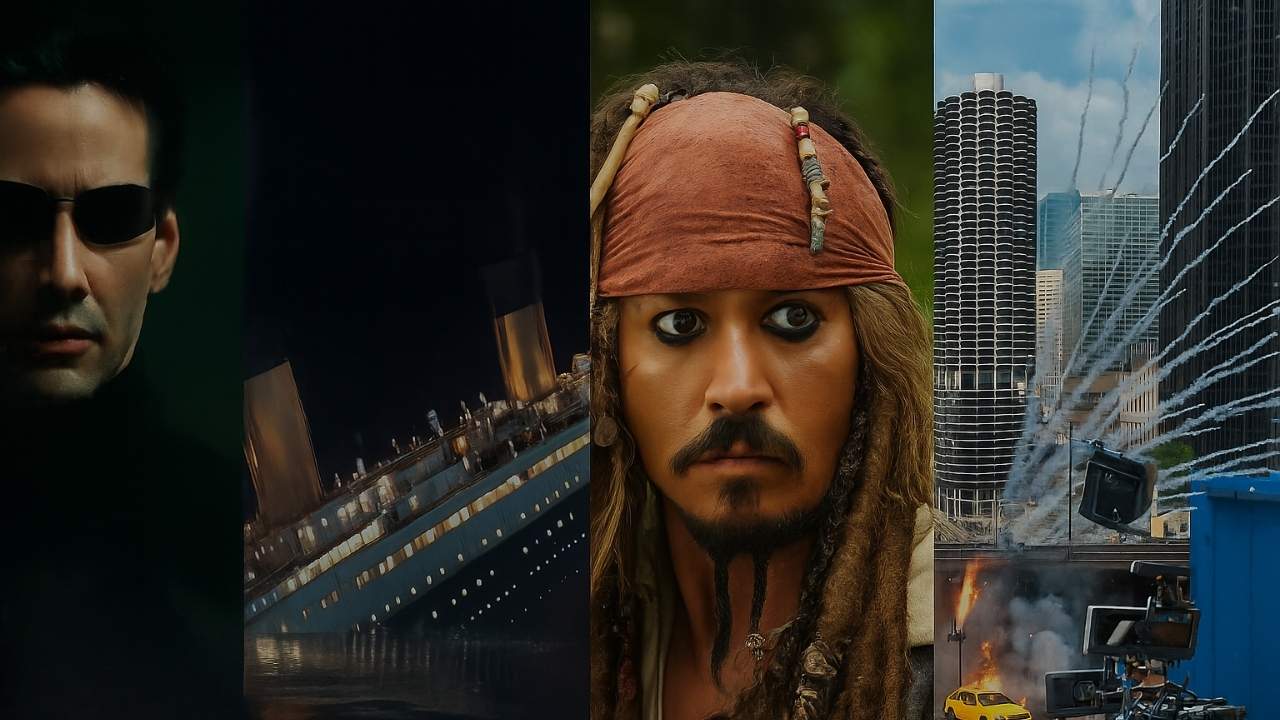Picture an accountant’s worst nightmare: a single scene that costs more than most people earn in a lifetime. Welcome to Hollywood, where directors casually burn through $50 million for three minutes of screen time, and studio executives somehow sleep at night.
The most expensive movie scenes in cinema history make lottery jackpots look like pocket change. We’re talking about sequences where The Matrix Reloaded spent $40 million building a fake freeway just to destroy it, or where James Cameron sank a replica Titanic worth more than a small country’s GDP.
The brutal truth? Most of these wallet-obliterating spectacles paid off. The Matrix freeway chase, Titanic’s sinking masterpiece, and Spectre’s $32 million car graveyard all generated box office gold that made their astronomical budgets look like shrewd investments.
But here’s what keeps film executives awake at night: for every expensive scene that prints money, there’s another that becomes a cautionary tale whispered in boardrooms across Hollywood. The costliest scenes in film history represent the ultimate gamble where artistic vision meets financial recklessness.
1. The Matrix Reloaded: When $40 Million Buys You the Perfect Traffic Jam
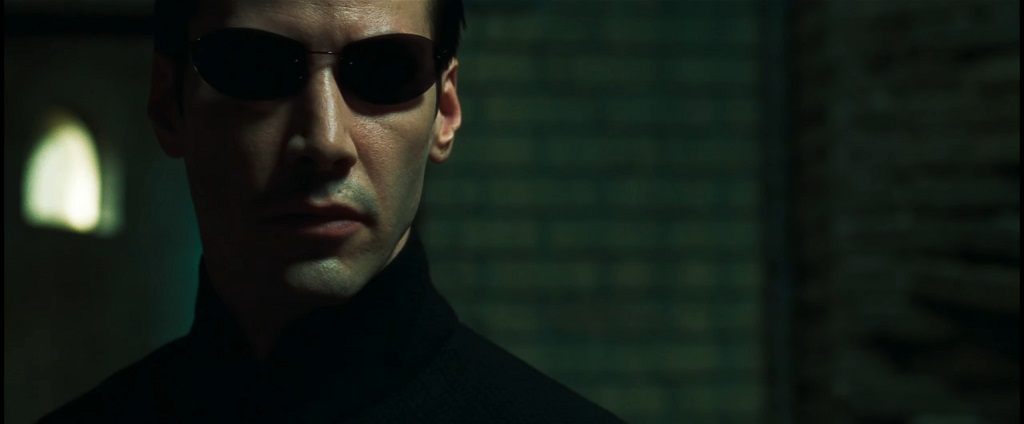
The Wachowskis had a simple request: “We need to build a freeway. A real one. Then we’re going to destroy it in the most spectacular way possible.” Warner Bros probably thought they were joking until the invoices started arriving.
The most expensive movie scenes often begin with directors who refuse to accept the word “impossible.” The Matrix Reloaded’s freeway sequence cost $40 million and required the construction of an actual highway system at a decommissioned naval base. Not a movie set that looked like a freeway. An actual, functional freeway explicitly built to be demolished.
The madness started with a $2.5 million highway construction project that would make transportation departments jealous. Engineers constructed 1.5 miles of a three-lane highway, complete with overpasses, on-ramps, and realistic surface textures. Then they surrounded it with cameras worth more than most indie film budgets.
But the highway was just the appetizer. The main course required 300 stunt performers, 100 vehicles, and enough explosive charges to level a city block. Keanu Reeves trained for months to perform motorcycle stunts that insurance companies probably still have nightmares about.
The result? Seventeen minutes of pure automotive poetry that redefined what expensive action scenes could achieve. Every crash felt real because it was real. Every explosion was weighted because actual metal was being twisted into abstract art at 80 miles per hour.
| Production Element | Cost Breakdown |
| Custom Highway Construction | $2.5 million |
| Vehicles and Destruction | $8 million |
| Special Effects Integration | $15 million |
| Cast, Crew, and Safety | $12 million |
| Insurance and Contingencies | $2.5 million |
| Total Scene Investment | $40+ million |
2. Titanic: The $25 Million Swan Song
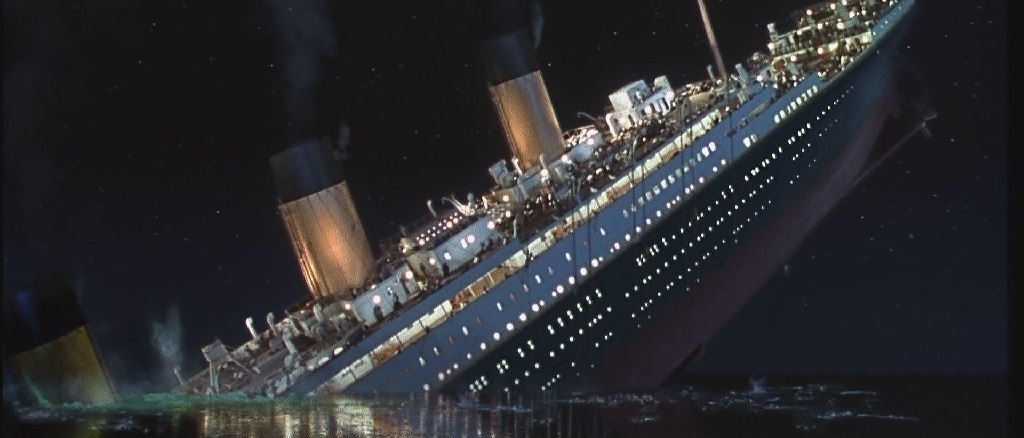
James Cameron doesn’t make movies; he orchestrates financial disasters that somehow become cultural phenomena. The sinking sequence of the Titanic represents the pinnacle of expensive CGI scenes combined with practical effects so ambitious that they border on the reckless disregard for studio budgets.
Cameron’s pitch was deceptively simple: “Let’s build the Titanic. Then let’s sink it. Properly.” What followed was an exercise in controlled financial madness, resulting in one of the most expensive single sequences in cinematic history.
The centerpiece was a 775-foot replica that cost $15 million before a single camera was even turned on. Engineers designed a tilting mechanism capable of handling hundreds of actors while creating the illusion of a 46,000-ton ship breaking apart. The hydraulic systems alone required more engineering expertise than most NASA projects.
Water became the film’s most expensive co-star. Massive tanks, wave machines, and flooding systems consumed millions more. Every gallon had to be precisely controlled to create specific visual effects without drowning the talent or destroying the cameras capturing the chaos.
The technical choreography was breathtaking. Hundreds of extras performed death scenes while navigating a tilting ship deck that could crush them if the hydraulics failed. Stunt coordinators earned their paychecks orchestrating human movement within an environment designed to simulate catastrophic failure.
Cameron refused to rely solely on computer graphics when practical effects could provide authentic terror. Real people fell into real water from real heights, creating visceral reactions that digital artists spend years trying to replicate.
3. Spectre: The $32 Million Car Funeral
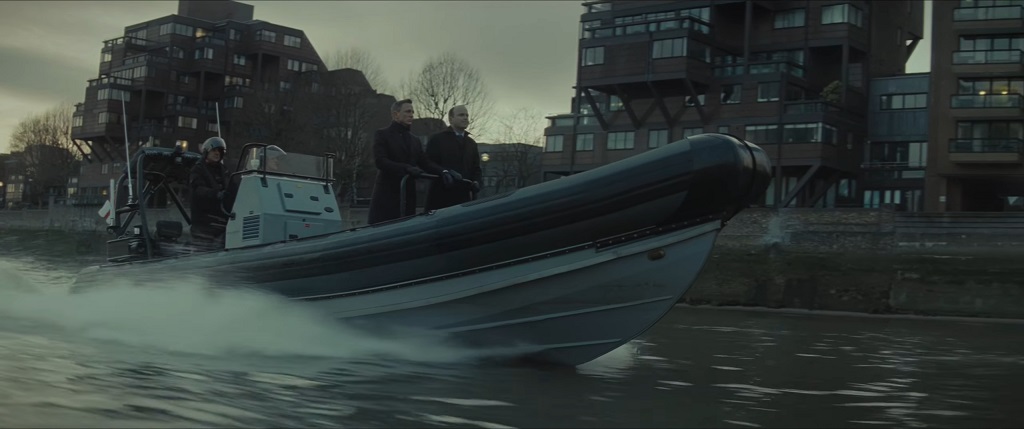
James Bond films have always treated expensive automobiles like ammunition, but Spectre elevated vehicular homicide to an art form. The production destroyed $32 million worth of cars during filming, creating what might be the most expensive automotive graveyard in cinema history.
Seven custom Aston Martin DB10s were built for your entertainment, each one hand-built exclusively for the film and worth more than most people’s homes. The production team treated these mechanical masterpieces like crash test dummies, destroying millions of dollars’ worth of automotive perfection for a few seconds of screen time.
The Rome chase sequence alone consumed enough luxury vehicles to stock a high-end dealership. Jaguar C-X75 prototypes worth millions each were sacrificed to the gods of cinematic spectacle. Insurance companies probably required therapy after reviewing the damage reports.
But the cars were just the beginning. Rome doesn’t let film crews destroy ancient streets without compensation. Location fees, street closures, and permits added millions more to a sequence that was already hemorrhaging money faster than the vehicles were losing oil.
Stunt coordinators earned every penny orchestrating crashes near priceless historical landmarks. One miscalculation could have turned an expensive action scene into an international incident involving UNESCO and several Italian government departments.
The precision required was extraordinary. Each crash had to be perfectly timed and executed while multiple cameras captured every angle of automotive destruction. Retakes meant destroying additional million-dollar vehicles, making every shot a financial gamble.
4. Pirates of the Caribbean: Digital Oceans and Real Budgets

Disney’s Pirates of the Caribbean: At World’s End concluded with a maelstrom battle that pushed expensive CGI scenes into uncharted waters. The sequence required creating an entirely digital ocean environment that looked more realistic than actual oceans.
Industrial Light & Magic developed water simulation technology that revolutionized the way movies depict aquatic environments. Every drop had to behave according to realistic physics while supporting supernatural story elements that defied natural laws. The computational requirements were staggering.
Multiple pirate ships engaged in combat within a computer-generated whirlpool that required new rendering techniques. Each vessel needed detailed digital models that could interact realistically with turbulent water while maintaining dramatic lighting that served the story’s emotional requirements.
The technical challenges were unprecedented. Animating realistic ship movement within chaotic water while coordinating sword fights, cannon battles, and supernatural elements required months of post-production refinement. Every frame represented hours of computational processing.
Character animation within the digital environment presented additional complexities. Actors performed on practical ship sets that were later composited into the digital maelstrom, requiring precise coordination between live-action performances and computer-generated environments.
Weather effects added another layer of expense. Rain, wind, and atmospheric elements had to interact convincingly with both digital and practical elements, creating seamless integration that audiences would accept as authentic maritime combat.
5. Transformers: When Chicago Became a $50 Million Sandbox
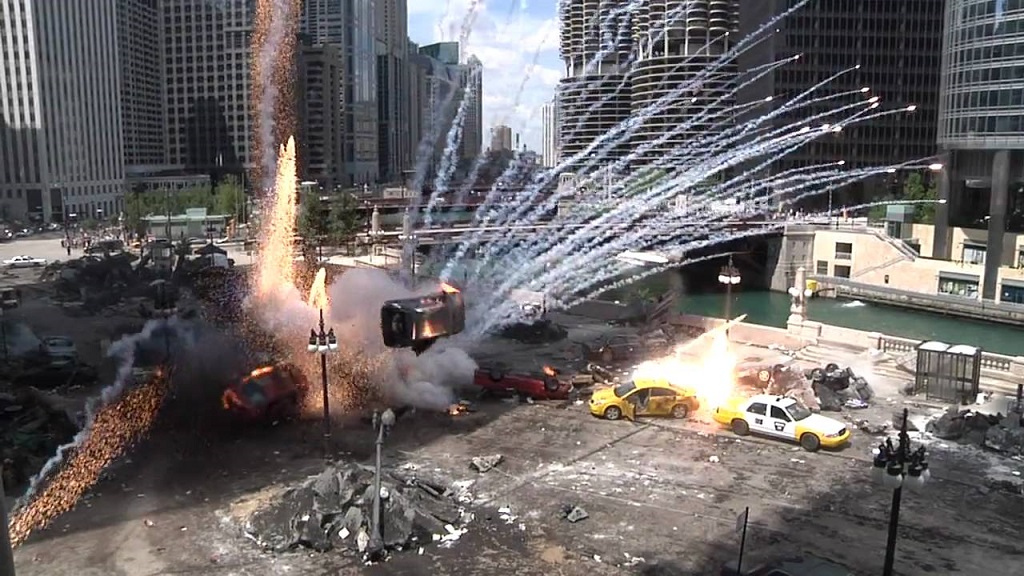
Michael Bay transformed downtown Chicago into his personal demolition playground, creating an extended destruction sequence that consumed over $50 million and redefined what expensive action scenes could achieve in urban environments.
The production rented an entire major American city for months. Chica granted unprecedented access to downtown areas, turning busy streets into movie sets where giant robots could battle without interference from actual urban life.
Practical explosions complemented digital robot battles, creating authentic destruction that enhanced the computer-generated mayhem. Real buildings suffered real damage under controlled conditions, adding visceral impact that purely digital destruction cannot replicate.
The Transformer models required extraordinary digital artistry. Each robot contained millions of individual parts that had to move realistically while interacting with practical environments. The computational requirements pushed rendering technology to its limits.
Coordinating human actors within environments designed for giant robot combat presented unique challenges. Extras had to react convincingly to threats that would be added months later in post-production, requiring precise direction and multiple camera angles to capture authentic responses.
Safety protocols added significant costs to an already expensive sequence. Protecting hundreds of people during controlled explosions and falling debris required extensive planning and specialized equipment that insurance companies demanded before approving the elaborate stunts.
6. Avatar: Building Alien Worlds Frame by Frame
James Cameron’s Avatar featured a climactic Tree of Souls battle that represented one of the most expensive entirely digital sequences ever created. Every element existed only in computers, yet felt more authentic than many practical locations.
The floating mountains of Pandora required the development of new rendering techniques that could handle massive scale while maintaining intricate detail. Each hill contained ecosystems of digital plants and creatures that had to behave according to realistic biological principles within an alien environment.
Motion capture technology translated hundreds of human performances into digital alien characters. The Na’vi warriors required facial expressions, body language, and movement patterns that felt authentically alien while remaining emotionally relatable to human audiences.
Aerial combat sequences featured entirely digital aircraft engaging in battles that obeyed realistic physics while incorporating fantastical elements. Dragon-like creatures fought human helicopters in environments that existed nowhere except in Cameron’s imagination and computer servers.
Environmental storytelling reached new levels of sophistication. Every plant reacted to character movement, every atmospheric effect supported the narrative, and every creature’s behavior reinforced the internal logic of the alien ecosystem. The attention to detail was obsessive.
Lighting and atmospheric effects created mood and drama within digital environments that had no physical reference points. Digital artists crafted sunset colors, mist effects, and magical luminescence that enhanced emotional story beats while maintaining visual consistency.
7. Fast & Furious 7: Defying Physics and Accountants
The Fast & Furious franchise reached peak financial insanity with Fast & Furious 7’s skyscraper jump sequence. Cars launched between buildings in a stunt that defied both physics and reasonable budget management.
Production teams built full-scale car rigs that could simulate vehicles flying through the air while maintaining passenger safety. The practical elements provided a foundation for digital enhancement, creating believable automotive aviation that pushed vehicular action cinema to new heights.
Abu Dhabi’s skyline became a digital playground where cars could soar between skyscrapers without destroying actual urban infrastructure. Digital artists created detailed building models that could interact realistically with flying vehicles while maintaining dramatic camera angles.
Safety considerations added enormous costs to already expensive practical stunts. Multiple backup systems, rehearsals, and specialized safety personnel ensured that ambitious automotive acrobatics could be filmed without endangering valuable Hollywood talent.
The sequence required coordinating practical car stunts with digital environments, creating seamless integration that audiences would accept as authentic automotive impossibility. Every shot represented a careful balance between practical authenticity and digital enhancement.
Vehicular physics had to feel realistic within unrealistic circumstances. Cars needed believable weight and momentum while performing stunts that actual vehicles could never survive, requiring subtle digital manipulation that enhanced rather than replaced practical stunt work.
The Accountant’s Nightmare: What Makes Scenes So Expensive?
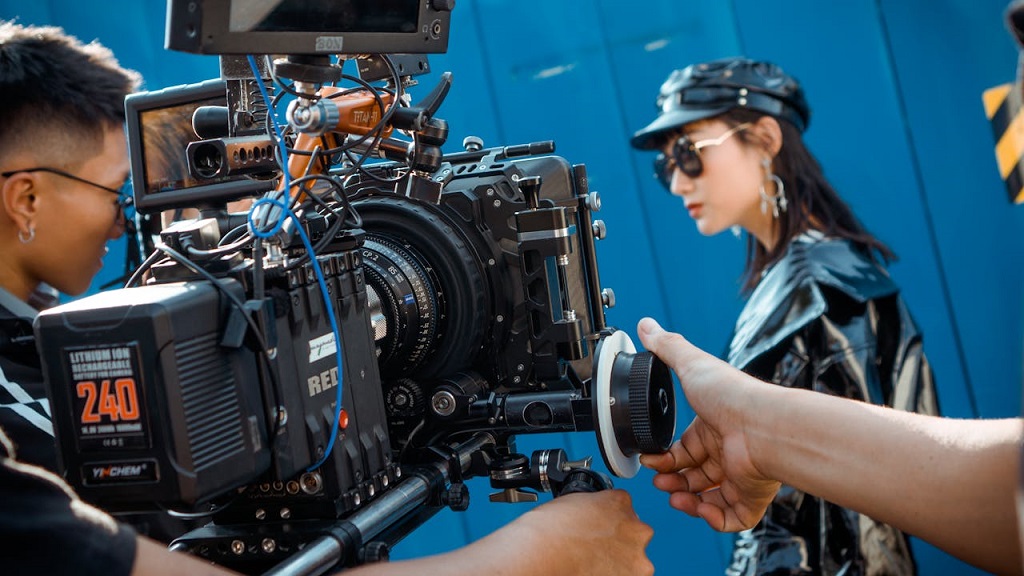
Behind every outrageously priced movie scene is a small army of specialists: stunt coordinators choreographing controlled chaos, digital artists crafting the impossible, and safety experts making sure no one dies while faking disaster.
Equipment costs alone can gut a budget. Custom-built rigs, specialty cameras, and advanced safety systems rack up daily rental fees that make indie budgets look like spare change. One shooting day can burn through more gear than most productions use in weeks.
Locations drive costs even higher. Shutting down Times Square, renting the Louvre, or building custom sets like the Matrix freeway? Every hour on-site can cost more than most people earn in a year.
Then comes post-production — and the spending doesn’t stop. High-end scenes often need months of digital refinement. Rendering farms devour electricity as armies of artists polish every frame to perfection.
And let’s not forget insurance. When big-name actors perform risky stunts on multimillion-dollar sets, insurance premiums skyrocket. Studios pay dearly to protect talent, equipment, and their investment from going up in smoke.
| Cost Category | Typical Scene Budget % |
|---|---|
| Specialized Labor and Talent | 40–50% |
| Equipment and Technology | 20–25% |
| Post-Production & Effects | 15–25% |
| Locations and Permits | 10–15% |
| Insurance and Risk | 5–10% |
The Business of Spectacular Failure
Studios approach high-cost scenes like venture capitalists: most won’t pay off directly, but the ones that do must return massive profits.
Global audiences often tip the scale. Action scenes require no translation, making them gold in international markets. Visual spectacle works worldwide, unlike dialogue-heavy dramas.
And there’s long-term value. A memorable scene can anchor a franchise, justify toy lines, spawn spin-offs, and inspire theme park rides. Studios know that one iconic moment can generate profit across decades and platforms.
Streaming and home media also extend the payoff. Expensive sequences often drive 4K sales, digital rentals, and premium subscription clicks — long after the box office closes.
When Expensive Scenes Become Priceless
Some scenes are so impactful, they outlive the movies they belong to. The Matrix freeway chase and Titanic’s sinking aren’t just costly—they’re iconic. They get studied, quoted, meme’d, and imitated. You can’t buy that kind of cultural relevance — but you can spend $40 million hoping to get there.
Major scenes also feed entire ecosystems. Disney and Universal have turned them into rides that earn more than the films. Merchandising thrives off signature moments, from collectible models to LEGO sets.
Even tech developed for big scenes leaves a legacy. New CGI techniques, motion rigs, and rendering systems often start as scene-specific inventions — and go on to change how the entire industry works.
FAQ
Which single movie scene holds the record for the highest production cost?
The Matrix Reloaded’s freeway chase sequence currently holds the record, with an estimated value of over $ 40 million for a single extended sequence. Fast & Furious films and recent Marvel productions are approaching similar budget levels for individual action sequences.
Do movie studios ever regret spending enormous amounts on single scenes?
Most studios consider expensive scenes worthwhile investments when they generate strong box office returns and have a significant cultural impact. However, some productions, such as John Carter and The Lone Ranger, featured expensive sequences that failed to justify their costs through ticket sales.
Are practical effects or CGI more expensive for spectacular scenes?
CGI scenes often cost more due to extended post-production requirements and specialized digital artist labor. Practical effects have higher upfront costs but typically incur expenses when filming wraps, while CGI expenses continue throughout post-production phases.
What happens to expensive props and sets after filming concludes?
The most expensive practical elements are destroyed during filming or dismantled afterward. Some iconic pieces become museum exhibits or theme park attractions, while others are sold to collectors or recycled for future productions.

